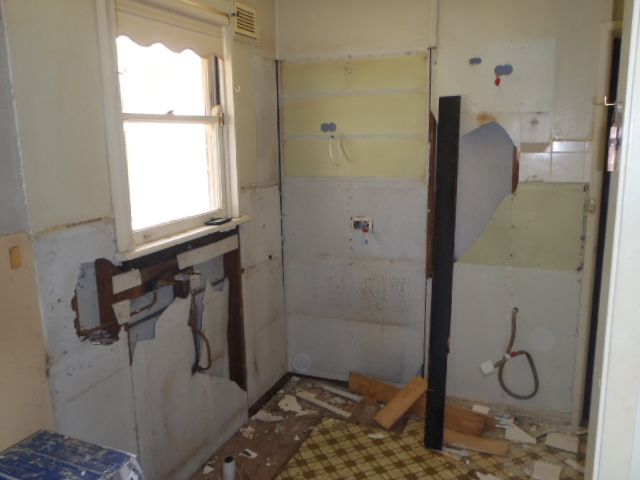
In the real estate industry it is well known that kitchens and bathrooms sell homes. Therefore these two rooms are regularly updated to remain in style and to add value to your property. The main difference between these rooms and the living areas within a property is that they require more than just a coat of paint and destructive work is required.
Renovating your kitchen may end up in exposing your family to asbestos
With the growing trend of DIY and the popularity of flat packs, the kitchen is the easier of the two rooms to undertake on your own with minimal assistance from trades required. The work involved includes demolition, removal and installation of the kitchen cabinetry and bench tops, potential removal and replacing of wall sheeting, as well as removal and replacing of the floor covering.
Before you pick up the sledge hammer and start ripping everything out, you should stop and consider if the walls and floor coverings may contain any asbestos as these materials are likely to be damaged during the removal. Common asbestos containing kitchen floor coverings include vinyl sheeting (commonly contained an asbestos paper backing) and tiles (commonly the glue also contained asbestos), even the kitchen sink can contain asbestos!
Depending on the age of the property the wall sheeting of the kitchen will generally include one of the following combinations:
- All plasterboard (non asbestos containing material)
- All fibre board or cement (common asbestos containing material)
- Top half plasterboard, bottom half fibre board (common asbestos containing material)
The third combination of wall sheeting materials is the one that raises the most concern. The top half of the wall is easily accessible and identifiable as plasterboard. This usually indicates that the bottom half of the wall is plasterboard as well. Due to the location of the cabinetry, the bottom half of the wall is almost completely inaccessible to confirm. If the property is pre-1990’s is it best to presume that the bottom half is asbestos containing fibre board until it can be proven otherwise.
The main picture shows a kitchen after everything have been ripped out. It can be seen that significant damage has occurred to the asbestos containing wall sheeting. Additionally the age of the vinyl flooring indicated that this material may also contain asbestos.
If work isn’t carried out property there is a real risk of asbestos exposure
The health risks associated with asbestos exposure are well known and documented. It is not worth taking the risk as not only yourself but the family may be exposed to the deadly material if the renovation is not completed safely.
It is best practice to have any suspect materials tested to determine if they contain asbestos prior to the commencement of any renovation works. If you are comfortable taking a sample yourself, they should be sent to a NATA Accredited Laboratory for testing or call in a competent assessor to carry out an asbestos inspection on your property to identify and locate all of the asbestos containing materials.
If you live in Sydney or Melbourne, then call one of our asbestos consultants to undertake an assessment before you undertake your kitchen renovation.
Author: Carl Strautins

Email: info@SafeEnvironments.com.au
Carl Strautins is a managing director of Safe Environments Pty Ltd a multi-specialist consultancy operating in the building, construction and property management industries. He provides the necessary guidance and risk minimisation strategies required by architects, construction companies and facility managers to ensure they mitigated their risk to property risk. He is engaged on a regular basis to provide expert opinion for disputes and legal proceedings. Click here to know more about him.

